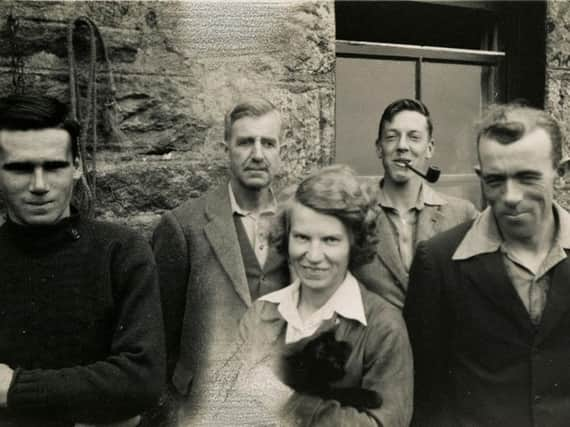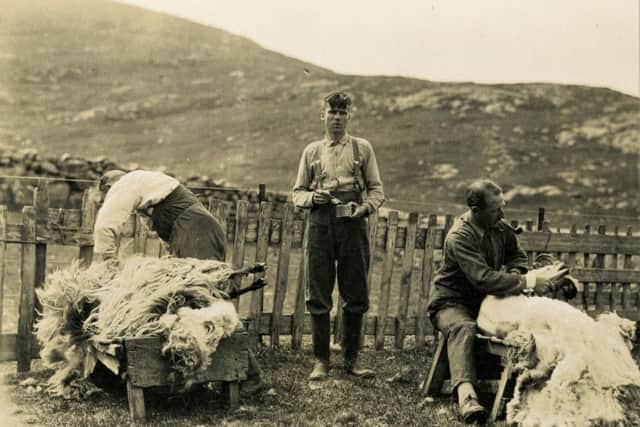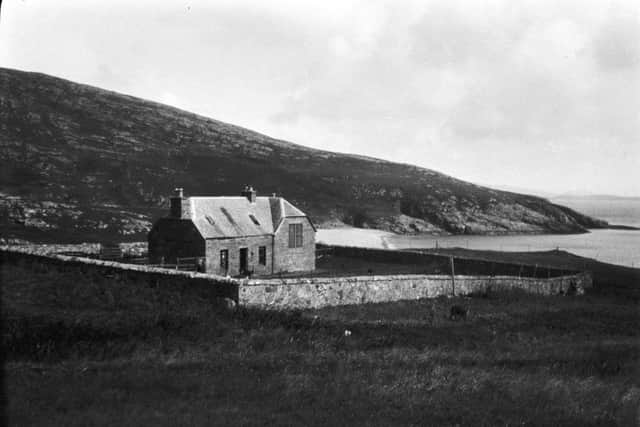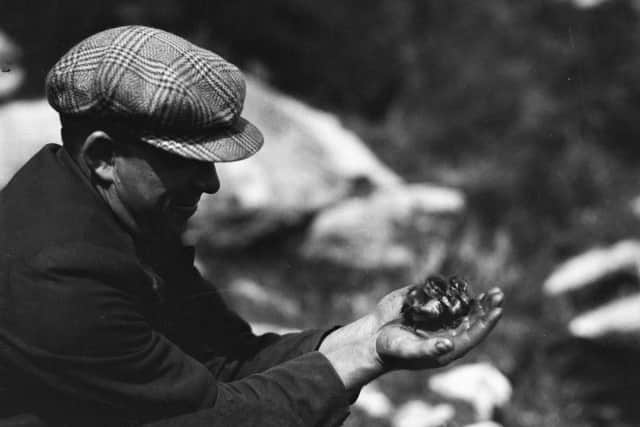The last traces of life on an abandoned Scottish island


Mingulay, which sits in the the string of Bishop's Isles south of Barra, was finally abandoned by its resident community in 1912.
The final evacuation followed years of struggle for survival, in part caused by overcrowding as people evicted from neighbouring islands during the Highland Clearances sought out a new home.


Advertisement
Hide AdAdvertisement
Hide AdIn 100 years, the population trebled to just over 160 people in 1885. There were more families than crofts to house its people, with the main village frequently hit by illnesses such as influenza and typhoid as conditions grew unsanitary. It was hard to get a doctor to visit the island, and indeed a priest.
Fishing business became unbearably hard and dangerous given the lack of a safe landing spot with the island's men increasingly going to Glasgow to work at the shipyards and the gas works.
Mingulay, once self sufficient, increasingly looked beyond its shores to survive, according to Ben Buxton in his book Mingulay: An Island and Its People.


In 1905, resident Morag Campbell Finlayson wrote: "We spend the winter months lonely and dull but I hope summer shall get us relief as we shall be like prisoners during the bad weather...I am hoping to leave Mingulay soon."
Two months later, Morag was gone with the last resident leaving for neighbouring Vatersay seven years later.
Mingulay was eventually used solely for grazing with its new owner, John Harold Russell, an English-born sheep farmer, living a hermit-like existence in the old schoolhouse.
He was joined by visiting shepherds in the spring and early summer.


In the early 1930s, photographer and folklorist Margaret Faye Shaw was employed as a cook for the men with the American relocating to Mingulay to feed the workers and record the island as it faded away.
Advertisement
Hide AdAdvertisement
Hide AdThe American spent long periods alone on Mingulay as desolation really started to set in, with houses once filled with people - now roofless - instead filling up with sand.
On Saturday May 30, 1931, she wrote: “I wander away to the deserted village… to look for querns and birds and feel again that strange sorrow that can only be found here.
"The green sea rolling in across the sands. The gulls and oyster catchers screaming- running at the edge of the foam. The nettles growing thick and fast in the wild iris leaves and in the banks of the little streams.
"Primroses and that little mound of graves- with crude stones and wretched cement crosses broken, crumbling- not a name to be found. And not a roof on the houses rapidly filling with sand.”
Fiona MacKenzie, the Canna House Archivist & Manager with National Trust for Scotland, which also now owns Mingulay, will speak at a conference next month in Inverness that will look at heritage, decay and memory.
She said Shaw's archive, including her written, photographic and audio work from Mingulay, powerfully captured a time and place now vanished.
Ms MacKenzie said: "The archive builds up a whole picture of life on Mingulay and now future generations can use that knowledge gathered from the past to use in the future.
"The island is completely deserted now but there is still life there, the island itself has not changed. The man-made things have withered and decayed but it is full of the voices of the past."
Advertisement
Hide AdAdvertisement
Hide AdRussell bought the island in 1929 from Barra hotelier John MacLean, who had in turn bought it from Lady Gordon Cathcart, who infamously supported clearance of her tenants and their emigration to Canada.
On meeting Russell in the early 1930s, Shaw wrote: "The coal stove had an oven, which was sometimes hot enough for baking. A whisky bottle was the rolling pin for my oatcakes and there was plenty of milk from the two nanny goats.
"The eggs were from the cliffs - from gulls, guillemots and razorbills - good for custards and omelettes but never to be boiled, when the taste would be of foul fish.
"Spam was made interesting in many ways and then we had rabbits which were caught by a pair of ferrets, the treasured friends of Mr Russell."
Russell put Mingulay and neighbouring Pabbay and Berneray, on the market in 1935 with the islands bought over by an Essex farmer for grazing. In 1975, they were sold again to Colin Archer, an English teacher who worked overseas, and he pursued his plan to turn the schoolhouse into a hostel but the condition of the building undermined the project.
According to Buxton, Mingulay 'remained in the hearts of islanders' despite the hardships they suffered there with annual pilgrimages made from Vatersay to the island.
In the year Archer took over the island, a final service was held in the chapel, before it was sold. By 1998, a service was held outside the church, which was by then just a ruin.